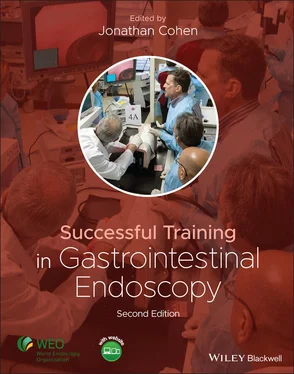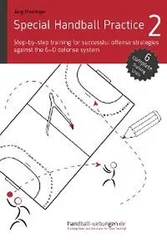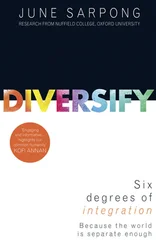A fundamental skill that should be in the skill set of any GI endoscopist is to be able to use instrumentation placed through the accessory channel to accomplish biopsy, snare a polyp, perform an injection, or apply energy for tissue destruction or hemostasis. Virtually, all GI endoscopes have a working channel through which instruments can be introduced. Although side‐viewing endoscopes are used in ERCP, or linear EUSs have an elevator that can be used to deflect the angle of accessories that exit the scope tip, most upper and lower endoscopes do not have a separate deflector for the instrument channel, hence control of the instrument must be achieved by orienting the working channel properly using the combination of tip deflection and torque of the scope to provide the best working angle between the instrument and the target. The endoscopist must be able to maintain a stable endoscopic position and clear view at all times when performing therapeutic procedures. At times, it may be helpful to have an assistant hold the endoscope in place while advancing the instrument, particularly if a stable position is hard to maintain.
Accurate targeting is a learned skill that can be practiced and evaluated. Metrics to evaluate targeting include time required to instrument the “lesion” once the target mucosa has been visualized, accuracy of placement of the instrument relative to the target, and number of attempts to direct the instrument to the target. This is relevant to a number of procedures such as biopsy in EGD, fine‐needle aspiration in EUS, cannulation in ERCP, and polypectomy in colonoscopy. Again, mastery of these tasks requires sufficient skill in scope handling and navigation, as well as an understanding of the cognitive aspects, such as indications for the intervention, potential complications, alternatives, and so on. This final stage of training is typically only reserved for advanced trainees who have successfully demonstrated proficiency in the fundamental earlier stages.
Simulators and task deconstruction
 Simulators can be beneficial in helping to train specific endoscopic‐related skills [17]. Simulators should be selected based on the educational goals as opposed to available technology, such that the capabilities and focus of the simulator match the learning task. For example, portable, inexpensive part‐task trainers are particularly useful for teaching navigation‐related tasks such as tip control and retroflexion (Video 2.2) [18–21]. Alternatively, ex vivo animal tissue models can be used to train more advanced techniques such as those related to hemostasis (e.g., hemoclip application, injection). Hybrid simulations, which link a simulated patient (i.e., an actor) with a virtual reality or inanimate simulator, can be used for focused teaching on endoscopic nontechnical skills such as communication, teamwork and situational awareness. In this way, simulators can be used to teach and/or reinforce various tasks depending on how they are used and integrated within a curriculum. As mentioned, a “progressive” learning strategy, which involves planned and gradual increases in the difficulty and complexity of tasks as learners’ abilities improve, can be used by educators to help guide the selection of simulators for educational programs. A stepwise progression enables trainees to build upon previously attained skills by engaging in activities of increasing difficulty without being cognitively overloaded [16]. As with clinical training, instruction and feedback are crucial to facilitate learning [22].
Simulators can be beneficial in helping to train specific endoscopic‐related skills [17]. Simulators should be selected based on the educational goals as opposed to available technology, such that the capabilities and focus of the simulator match the learning task. For example, portable, inexpensive part‐task trainers are particularly useful for teaching navigation‐related tasks such as tip control and retroflexion (Video 2.2) [18–21]. Alternatively, ex vivo animal tissue models can be used to train more advanced techniques such as those related to hemostasis (e.g., hemoclip application, injection). Hybrid simulations, which link a simulated patient (i.e., an actor) with a virtual reality or inanimate simulator, can be used for focused teaching on endoscopic nontechnical skills such as communication, teamwork and situational awareness. In this way, simulators can be used to teach and/or reinforce various tasks depending on how they are used and integrated within a curriculum. As mentioned, a “progressive” learning strategy, which involves planned and gradual increases in the difficulty and complexity of tasks as learners’ abilities improve, can be used by educators to help guide the selection of simulators for educational programs. A stepwise progression enables trainees to build upon previously attained skills by engaging in activities of increasing difficulty without being cognitively overloaded [16]. As with clinical training, instruction and feedback are crucial to facilitate learning [22].
In developing new simulators, task deconstruction is important to ensure key tasks are integrated within the model and focused on as points of instruction [3]. Similarly, it aids in formulating simulator‐derived metrics that can serve as objective performance feedback for trainees.
The training of endoscopic skill is an important component of residency training that has not been the focus of extensive study. In this chapter, we have attempted to illustrate that although performing endoscopy involves highly complex psychomotor skills, a structured approach to training using deconstruction of relevant skill sets can be a useful starting point to designing training. Although current training programs are no doubt producing competent endoscopists, and many have learned endoscopy on their own in the past, observations from a variety of perspectives have demonstrated that there is room for improvement. A careful examination of current training methods using a framework for both endoscopy and training, such as that described in this chapter as a starting point, can assist endoscopy trainers in providing efficient, timely, and comprehensive training to future endoscopists.
Video 2.1Acquisition of technical and procedural skills: lessons learned from teaching laparoscopic surgery.
Video 2.2Demonstration of the Thompson Endoscopic Skills Trainer (TEST), developed to emphasize fundamental endoscopic technical skills for basic maneuvers including retroflexion, tip deflection, torque, polypectomy, navigation, and loop reduction.
1 1 Peyton JWR: The learning cycle. In: Peyton JWR (ed), Teaching and Learning in Medical Practice. Rickmansworth, UK: Manticore Europe Limited, 1998:13–19.
2 2 Logan GD: Toward an instance theory of automatization. Psychological Review 1988; 95:492–527.
3 3 Walsh CM, Cohen J, Woods KL, et al.: ASGE EndoVators Summit: simulators and the future of endoscopic training. Gastrointestinal Endoscopy 2019; 90:13–26.
4 4 Walsh CM, Anderson JT, Fishman DS: Evidence‐based approach to training pediatric gastrointestinal endoscopy trainers. Journal of Pediatric Gastroenterology and Nutrition 2017; 64:501–504.
5 5 Ericsson KA, Krampe RT, Tesch‐Romer C: The role of deliberate practice in the acquisition of expert performance. Psychological Review 1993; 100:363–406.
6 6 Schön DA: Educating the Reflective Practitioner: Toward a New Design for Teaching and Learning in the Professions. San Francisco, CA: Jossey‐Bass, 1987.
7 7 Scaffidi MA, Khan R, Grover SC, et al.: Self‐assessment of competence in endoscopy: challenges and insights. Journal of the Canadian Association of Gastroenterology 2020 June 23. doi: 10.1093/jcag/gwaa020. Online ahead of print. https://academic.oup.com/jcag/advance‐article/doi/10.1093/jcag/gwaa020/5861560.
8 8 Scaffidi MA, Walsh CM, Khan R, et al.: Influence of video‐based feedback on self‐assessment accuracy of endoscopic skills: a randomized controlled trial. Endoscopy International Open 2019; 7:E678–E684.
9 9 Anderson J: Teaching colonoscopy. In: Waye JD, Rex DK, Williams CB (ed), Colonoscopy: Principles and Practice, 2nd ed. New York: Wiley‐Blackwell, 2009:141–153.
10 10 Shah SG, Brooker JC, Williams CB, et al.: Effect of magnetic endoscope imaging on colonoscopy performance: a randomised controlled trial. Lancet 2000; 356:1718–1722.
11 11 Wulf G, Prinz W: Directing attention to movement effects enhances learning: a review. Psychonomic Bulletin & Review 2001; 8:648–660.
12 12 Anderson JT, Valori R: Training for trainers in endoscopy (colonoscopy). In: Francis N, Fingerhut A, Bergamaschi R, Motson R (ed), Training in Minimal Access Surgery. London, UK: Springer, 2015:61–78.
13 13 Pashler H: Dual‐task interference in simple tasks: data and theory. Psychological Bulletin 1994; 116:220–244.
14 14 Dilly CK, Sewell JL. How to give feedback during endoscopy training. Gastroenterology 2017; 153:632–636.
Читать дальше

 Simulators can be beneficial in helping to train specific endoscopic‐related skills [17]. Simulators should be selected based on the educational goals as opposed to available technology, such that the capabilities and focus of the simulator match the learning task. For example, portable, inexpensive part‐task trainers are particularly useful for teaching navigation‐related tasks such as tip control and retroflexion (Video 2.2) [18–21]. Alternatively, ex vivo animal tissue models can be used to train more advanced techniques such as those related to hemostasis (e.g., hemoclip application, injection). Hybrid simulations, which link a simulated patient (i.e., an actor) with a virtual reality or inanimate simulator, can be used for focused teaching on endoscopic nontechnical skills such as communication, teamwork and situational awareness. In this way, simulators can be used to teach and/or reinforce various tasks depending on how they are used and integrated within a curriculum. As mentioned, a “progressive” learning strategy, which involves planned and gradual increases in the difficulty and complexity of tasks as learners’ abilities improve, can be used by educators to help guide the selection of simulators for educational programs. A stepwise progression enables trainees to build upon previously attained skills by engaging in activities of increasing difficulty without being cognitively overloaded [16]. As with clinical training, instruction and feedback are crucial to facilitate learning [22].
Simulators can be beneficial in helping to train specific endoscopic‐related skills [17]. Simulators should be selected based on the educational goals as opposed to available technology, such that the capabilities and focus of the simulator match the learning task. For example, portable, inexpensive part‐task trainers are particularly useful for teaching navigation‐related tasks such as tip control and retroflexion (Video 2.2) [18–21]. Alternatively, ex vivo animal tissue models can be used to train more advanced techniques such as those related to hemostasis (e.g., hemoclip application, injection). Hybrid simulations, which link a simulated patient (i.e., an actor) with a virtual reality or inanimate simulator, can be used for focused teaching on endoscopic nontechnical skills such as communication, teamwork and situational awareness. In this way, simulators can be used to teach and/or reinforce various tasks depending on how they are used and integrated within a curriculum. As mentioned, a “progressive” learning strategy, which involves planned and gradual increases in the difficulty and complexity of tasks as learners’ abilities improve, can be used by educators to help guide the selection of simulators for educational programs. A stepwise progression enables trainees to build upon previously attained skills by engaging in activities of increasing difficulty without being cognitively overloaded [16]. As with clinical training, instruction and feedback are crucial to facilitate learning [22].










